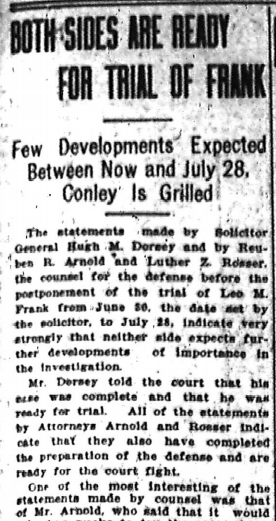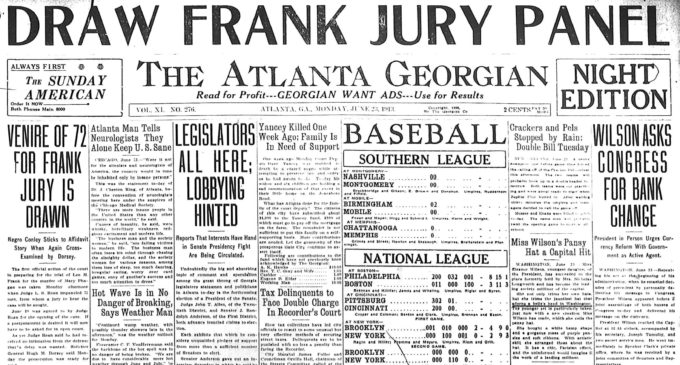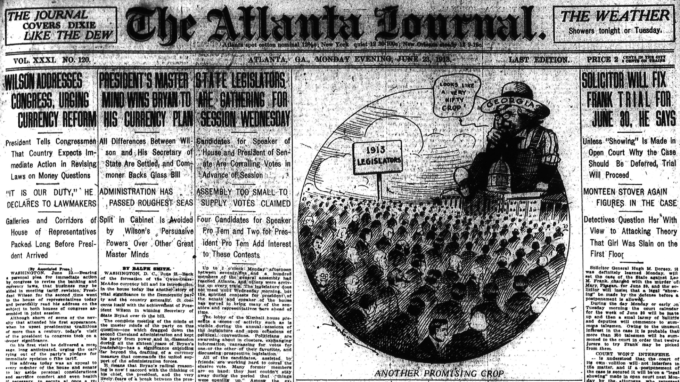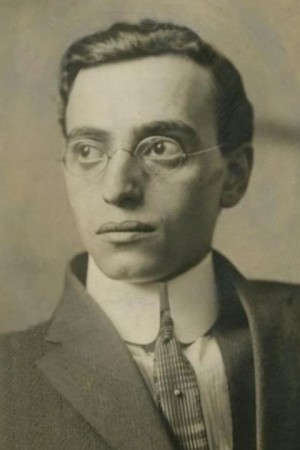Another in our series of new transcriptions of contemporary articles on the Leo Frank case.
Atlanta Georgian
August 9th, 1913
THE RIDDLE OF THE CLOCK IN THE PHAGAN MYSTERY
Jim Conley swears Mary Phagan went up the stairs of the National Pencil factory and was murdered before Monteen Stover arrived. He says he saw Miss Stover go up and leave.
Monteen Stover, State’s witness, swears she arrived at 12:05.
George Epps, State’s witness, swears he and Mary Phagan arrived at Marietta and Forsyth streets at 12:07.
The car crew, defense’s witnesses, swear Mary arrived at Broad and Marietta at 12:071/2 and at Broad and Hunter at 12:10.
If Mary Phagan was at Marietta and Forsyth at12:07, as the State says, or at Broad and Hunter at 12:10, as the defense says, how could she have preceded Monteen Stover, as Jim Conley says, up the factory stairs, when Monteen Stover was in the factory at 12:05?
What’s the answer?
By JAMES B. NEVIN.
Tick-tock! Tick-tock!
Hark to the tale of the old hall clock!
Tick-tock! Tick-tock!
This is the tale of the clock!
—Old English Ballad.

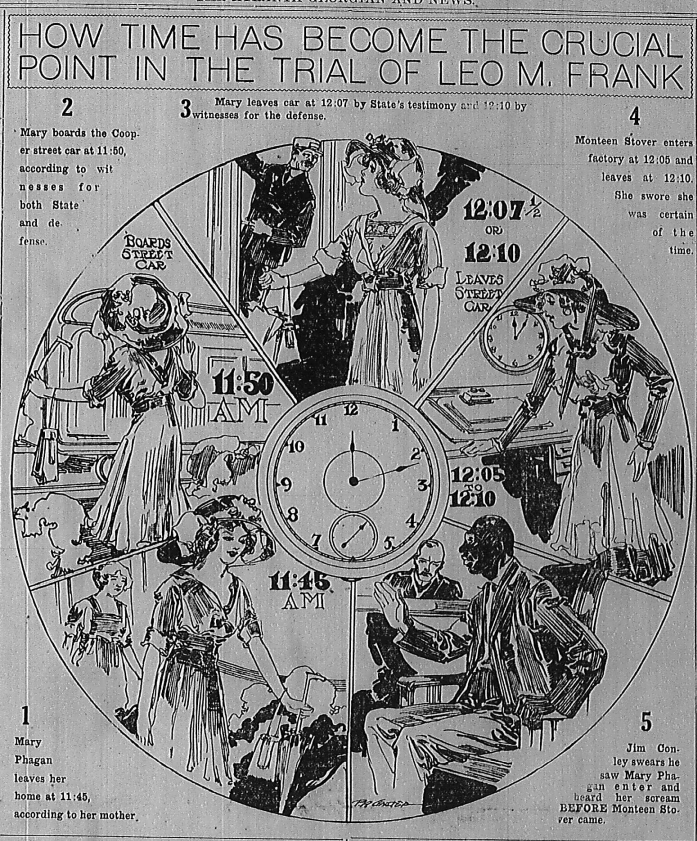
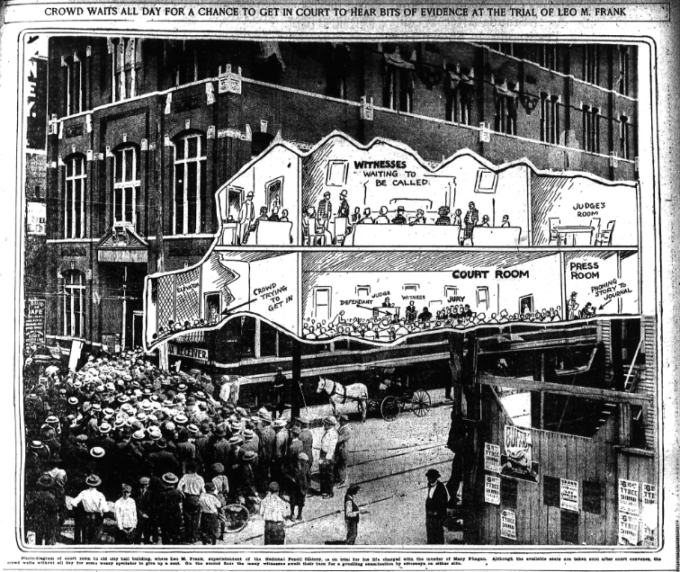
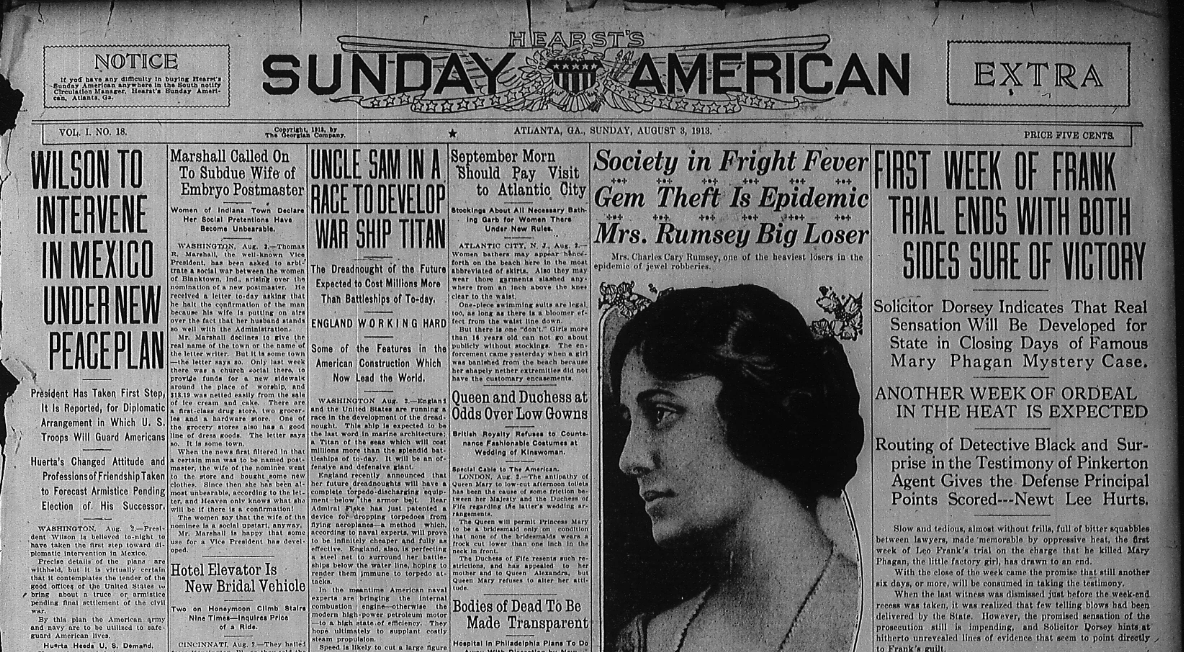
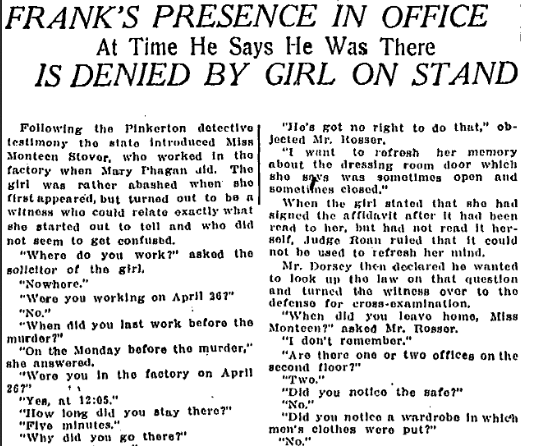
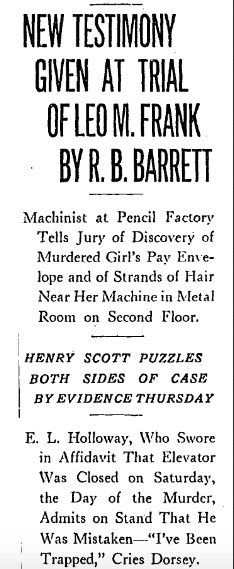

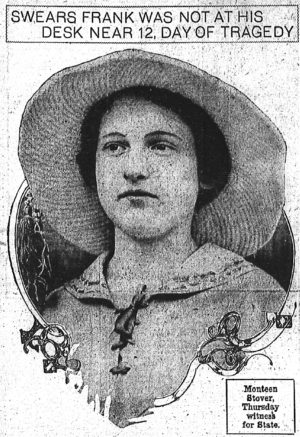
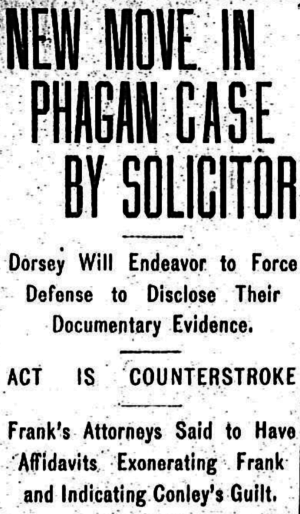 Another in
Another in 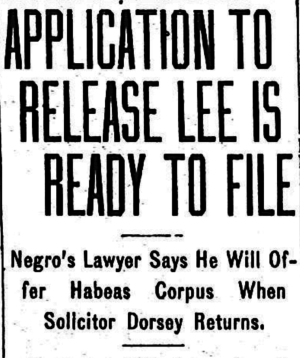 Another in
Another in 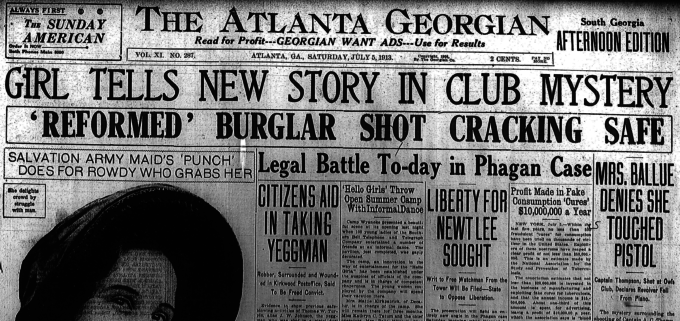 Another in
Another in 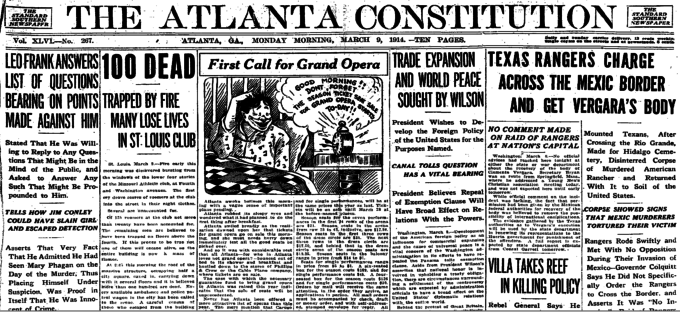 Another in
Another in 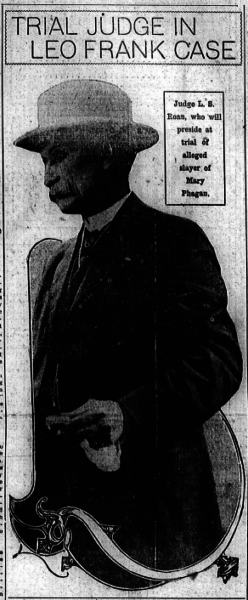
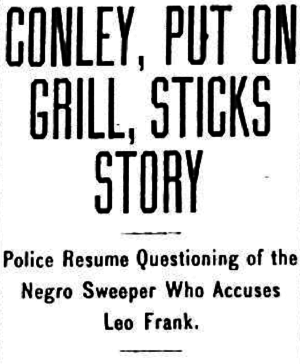 Another in
Another in 
